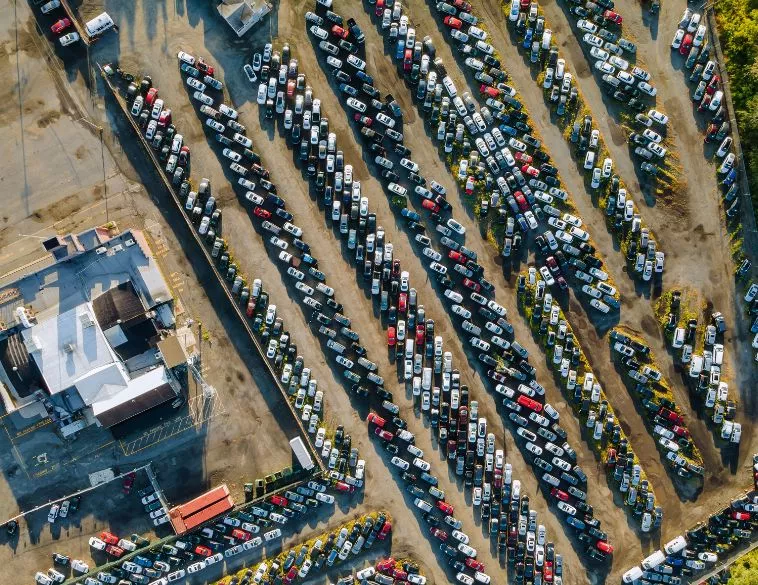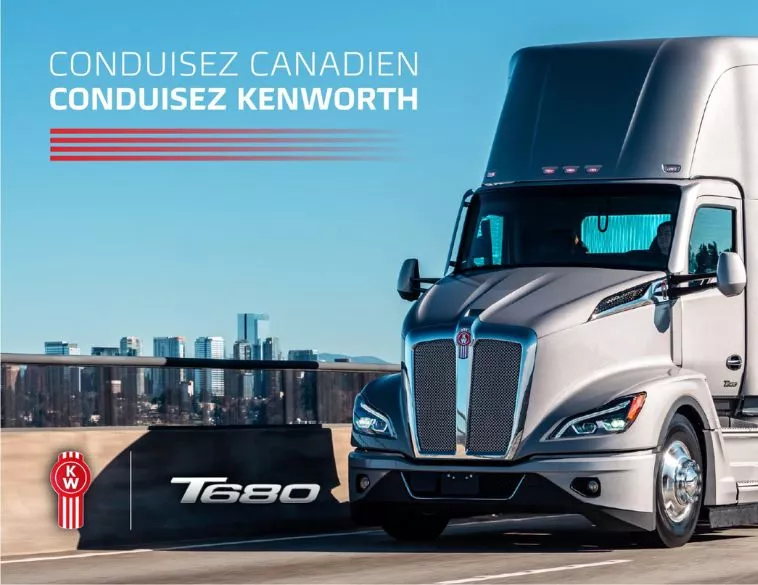Tariff Woes

A closer look at how tariffs affect vehicle values.
From higher food prices to more expensive consumer goods, the ongoing tariff war is affecting all Canadians, and impacting both our personal and professional lives. This includes fleet managers who are thinking of remarketing their current vehicles, and planning their next acquisition.
“Tariffs are definitely having an impact,” says Basil Marcus, President, Foss National Leasing. “The U.S. dollar is always the biggest factor, but we’re also seeing a lot less U.S. buyers at the auctions, and that is definitely having an impact on residual values.”
Holly Vollant, Manager, North American Remarketing at Holman agrees. “Cross-border sales remain an outlet for Canadian used inventory, but pricing dynamics have shifted significantly due to tariff considerations and global economic uncertainty,” she explains. “Dealers still purchase Canadian vehicles for export to the U.S., but values now reflect adjustments for tariff driven inflation. U.S. buyers are showing a greater preference for vehicles manufactured in the United States (identified with VINs beginning with a 1) as they typically provide a stronger return on investment, given today’s market conditions.”
Another key issue, Foss National’s Marcus explains, is something that fleet professionals may not be dealing with now, but will likely have to do so in the future. “We’re getting a lot of Canadian-, Mexican-built vehicles, so they get a different classification than U.S.-built vehicles,” he says. “So if we don’t resolve the tariffs soon, they’re not going to be as desirable in the U.S. market, and that could have an impact on residual values.”
Holman’s Vollant notes that tariffs have had a measurable impact on remarketing values. “Vehicles manufactured in Canada and Mexico (typically identified with VINs beginning with a 2 or a 3) experienced a rapid decline in fair market value, dropping by approximately 15-20% on average,” she says. “This decline occurred virtually overnight as the secondary market recalibrated to account for the increased costs tied to tariffs.”
She stresses that macroeconomic uncertainty and volatility have added a new layer of complexity to vehicle remarketing. “In addition to standard valuation inputs such as year, make, model, milage, condition, etc., remarketing professional must now also account for the vehicle’s country of origin,” she says. “As you can imagine, this additional variable can significantly influence vehicle demand and, in turn, resale value.”
The good news, Marcus notes, is that commercial vehicles are generally selling well, especially commercial trucks and vans. “White metal is very consistent,” he adds. “There’s always a buyer who needs it or wants it.”
Higher acquisition costs
The tariffs are proving to be a real two-edged sword for fleet professionals. Not only is remarketing a challenge, but acquisition costs are higher. In other words, fleets find themselves in the difficult position of getting less than they might expect for their used vehicles, as well as having to pay more to replace those vehicles with new ones.
“New vehicles are getting more expensive, because even if it’s just the steel and aluminum tariffs, which we don’t talk about anymore, they add to the price of new vehicles,” Marcus explains.
Back to normal
Marcus argues that although current economic realities, including tariff pressures,translate into less than ideal remarketing conditions, things aren’t as bad as some might think.
“People say that the markets have softened, but they’re just back to pre-COVID levels, which is normal,” Marcus explains. “So some people may say that tariffs and economic uncertainty are causing a downturn in the residual values of vehicles. But the truth is that vehicles have just normalized back to what they were before COVID, if you look at the data.”
Thinking back to the realities of the past several years, Marcus reminds everyone that we went through COVID, and then we went through supply chain shortages, which then created a massive demand for used vehicles because new vehicles were impossible to find. “And that really ballooned the prices,” he adds.
What we’re seeing now is a flattening of that market, he argues. “What I’d be more concerned about, from a residual perspective, is that a lot of people, during that period, paid a premium for their vehicles,” he says. “Concessions disappeared, vehicles were over-contented, and fleets paid MSRP-plus vs. book less concession. Now they’re going to remarket those vehicles, and it’s going to appear to them that the market has softened. The fact is, a vehicle is worth what it’s worth—you just overpaid for it when it was new.”
A good time to remarket
Marcus offers the following advice to any fleet professional who is contemplating holding on to their assets longer than they had planned, just because they don’t know if they’ll get top dollar for those assets if they were to remarket them now: Don’t!
“If a vehicle has reached its lifecycle from a fleet perspective, the prudent thing to do is remarket it before you start getting into high expenses from a maintenance perspective,” he says. “I would say that it’s a good time to remarket, because the market is balanced. By that I mean that new vehicle costs have come down just a touch, the manufacturers are keen to move product, and concessions are back to a higher level. So you’re paying less for your new vehicle, and although you might be getting a little less for your used vehicle, as long as you use prudent depreciation, it should be very well balanced.”
When it comes to gettingtop dollar for a vehicle at remarketing time, fleet professionals need to go back to the fundamental of prudent fleet management. “Fleet operators should ensure vehicles are kept in good condition, and maintain detailed service records to help optimize resale values,” says Holman’s Vollant.
Foss National’s Marcus agrees. “Buyers love fleet vehicles because they know that they have been well maintained, they’re been serviced at an authorized shop, and a lot of dealers refer to fleet vehicles as lot-ready,” he says. “So they buy them on a Wednesday and put them on their lot on Thursday because they’re that clean. And that’s the key. Dealers don’t want to invest a lot of time and money in these vehicles. That’s what buyers in the used market want, and that’s what fleet sellers can offer.” It’s a win-win.




